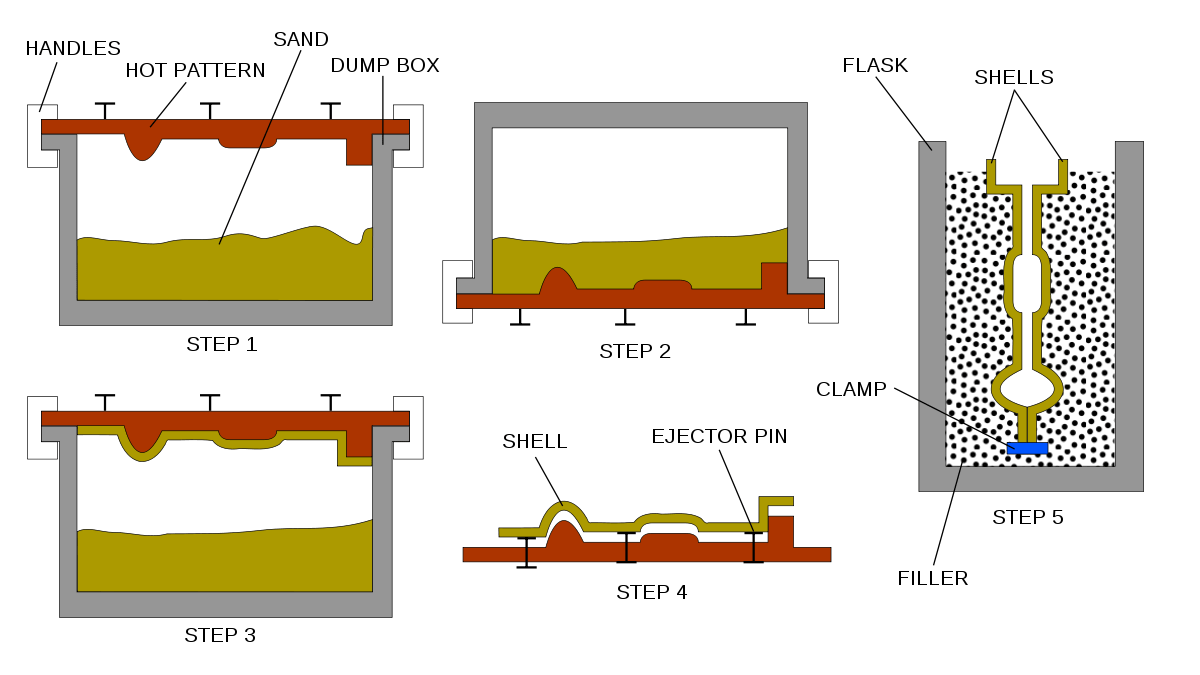Advantages and Disadvantages of Shell Mold Casting:
Advantages Shell Mold Casting:
- Shell mold casting is a versatile process that can be used to produce parts made from a variety of different materials, including metals such as aluminum, brass, and steel.
- Shell molding is a relatively simple process that can be used to produce high-quality castings.
- The two-part mold allows for easy removal of the casting, which minimizes damage to the original product.
- The use of a plaster or resin mold allows for a high degree of accuracy and detail in the casting.
- It produces a high-quality cast.
- It is a Short production cycle, increased work surface area, increased strength.
- Shell mold casting has a very high level of dimensional accuracy and surface finish, but there is room for greater thickness variation (because it is more material-dependent).
- It produces parts with a very good surface finish. This is because the molding sand sticks to the casting very well, which minimizes the formation of defects on the surface.
- shell mold casting can produce complex parts with a high degree of accuracy and repeatability.
- The process is often used for small-batch production as well as large production runs.
- Shell mold castings are generally less expensive than investment castings or die-cast parts, but more expensive than sand castings.
Disadvantages Shell Mold Casting:
- The process can be slow and expensive, particularly when using a resin mold.
- The quality of the casting can be affected by the accuracy of the mold.
- The process is not suitable for casting large or heavy objects.
- Tooling cost is expensive and the molten metal needs to be fed into a vacuum chamber so it is not oxidized from contact with air.
- Shell Mold Casting is that it can be a bit messy.
- The molten metal will often splash out of the mold and onto the floor or bench, so you need to be careful to protect your surroundings.
- The mold should be heated before you can pour your metal into it. This can be a problem if you are using a crucible furnace, as it takes time to heat the mold and then wait for the metal to cool down enough to pour it out.
Conclusion:
In conclusion, shell molding is a versatile and accurate casting process that can be used to produce high quality castings. The two-part mold allows for easy removal of the casting, which minimizes damage to the original article. The use of a plaster or resin mould allows for a high degree of accuracy and detail
Processes such as heat setting also add to overall cost and time.



